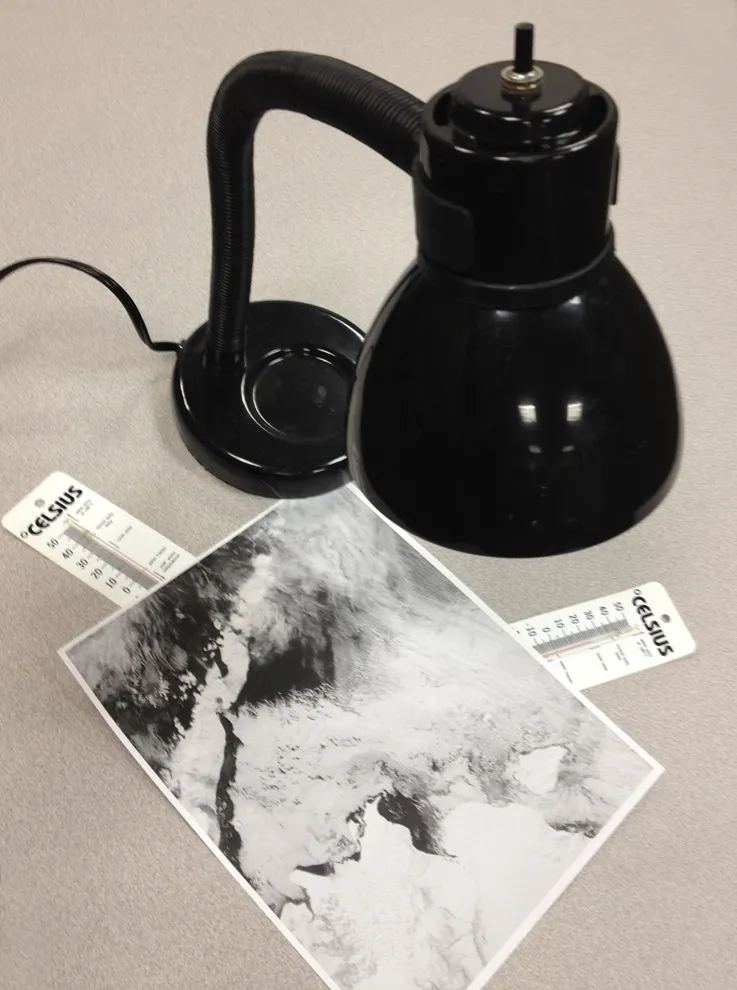Sea Ice and Heat: A Vicious Cycle

Make a simple model that shows how the color of ice and water impacts temperature and get a sense of this vicious cycle for yourself.
UCAR
Melting sea ice has only a minor impact on sea level rise because the ice is already in the ocean, but it does cause major changes to the planet. When sea ice melts, more sunlight is absorbed by the Earth, which causes more warming.
It’s a vicious cycle. And here’s how it works:
When solar radiation hits snow and ice, approximately 90% of it is reflected back out to space. As global warming causes more snow and ice to melt each summer, the ocean underneath the ice is exposed. The dark color of ocean absorbs more incoming solar radiation, reflecting less back out to space. In this way, melting ice causes more warming and so more ice melts. This is known as a feedback. According to a recent scientific study that used computer models to predict the future of Arctic sea ice, there may be no more sea ice left in the Arctic Ocean during summer within the next few decades
You can make a simple model that shows how the color of ice and water impacts temperature.
What you need:
- 2 thermometers
- A photo of what sea ice and ocean look like from a satellite (like this one from the NASA Earth Observatory)
- Tape
- Watch or stopwatch
- A lamp with a 75-100 watt incandescent bulb (or sunshine)
What you do:
- Fix thermometers to the back of the picture using tape. One thermometer bulb should be under ice and the other under ocean. Place the thermometers so that when you lay the picture down on a table, they are right side up and can be read.
- Place the light about a foot above the picture. Don’t turn it on yet!
- Read the thermometers before the light is turned on.
- Turn on their light and record the start time.
- Read the temperature of both thermometers every two minutes. Which warms faster: the thermometer under white ice or the one under dark ocean?
Check out more icy science:
- A classroom version of the activity above: Looking into Surface Albedo